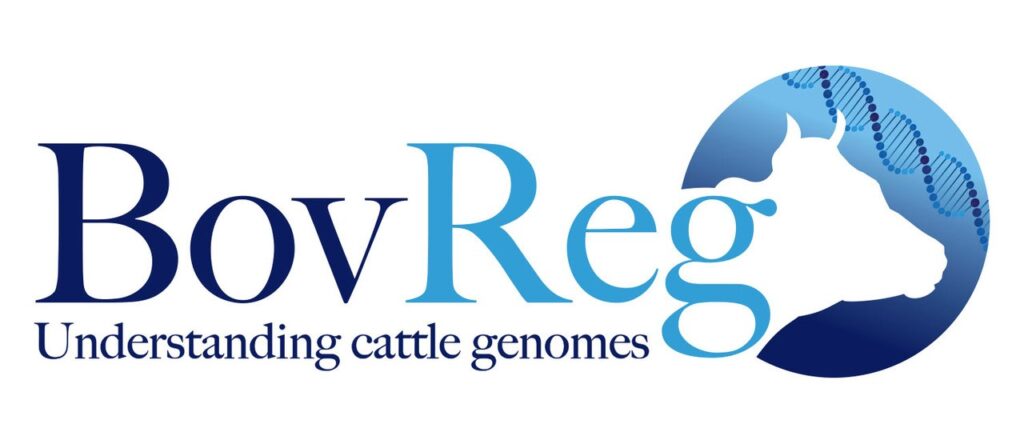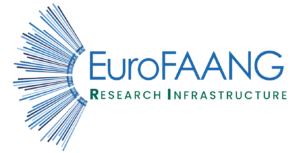Work Package 7
Linking and exploiting synergies with existing projects and infrastructures to consolidate G2P research in farmed animals across Europe
The ESFRI landscape of European Research Infrastructures in biology is already quite populated, but there is gap in farmed animal science and a need to bring together national facilities at the pan-European level for animal genetic resources, phenotyping and breeding, and animal health. EuroFAANG can address this gap, and as a new infrastructure concept, must demonstrate its added value compared to existing research infrastructures (RIs) in the ESFRI Roadmap as well as to on-going INFRAIA projects that are potential future RIs. Furthermore, EuroFAANG can take advantage of on-going RIA projects in the field of animal genomics and phenomics to prepare its use policy (WP2) and address the expectations of the scientific community. Added value and reciprocal benefits will be achieved at several different levels: sharing tools, protocols and data; developing complementary services; organising joint training; fostering cross domain research connections. The objectives of WP7 are:
- Listing a set of RIs with which the EuroFAANG infrastructure would produce white papers and prepare collaboration agreements.
- Setting the basis for a ‘one-stop-shop’ to orient researchers towards other RIs in order to answer a G2P question (linking with WP3 objectives for data brokering).
- Being a sustainable source of biological models for in vitro phenotyping, characterised in partnership with other RIs or within funded research projects.
The first step of this task will be to map the relevant RIs in the ESFRI Roadmap. It is already obvious that Elixir will be a major partner for EuroFAANG. Advanced collaboration with Elixir in the field of data standards and data management is included in WP3. Here, the aim is to study the potential added value and the feasibility of establishing an Animal Agriculture Community within Elixir, drawing from the experience of the existing Plant Science Community. For this, we will map the interest of data scientists across countries and Elixir nodes to collaborate in a community for farmed animal research. The governance of Elixir has already been contacted and agrees (via a letter of support – see Appendix) to include this objective in a joint workshop (described in WP3), which will make it possible to prepare the terms of reference of an Elixir Animal Agriculture Community. In addition, specific workshops will be organised with representatives of INFRAFRONTIER, to learn from their experience in developing and distributing mouse models, and with representatives of BBMRI and EMBRIC to learn from their experience in the organisation of a biobanking framework. Based on the outcome of mapping relevant RIs in the ESFRI Roadmap, further meetings will be set up to explore new synergies. Outputs from these exchanges will be provided to WP4 and WP5 to achieve shared cooperative goals.
This task will map the relevant projects from the INFRAIA, INFRA-DEV, INFRA-SERV, INFRA-TECH actions. Mapping of the national R.I Roadmaps in the field of phenomics and genomics for farm animals, will also be performed, to anticipate a possible future European organisation of national RIs in this field. The priority will be to organise discussions with the on-going animal phenotyping INFRAIA projects, AQUAEXCEL and Pigweb. In addition, networking activity will be maintained with the recently ended SmartCow INFRAIA project. Synergies between EuroFAANG and phenotyping infrastructure projects could include:
• the development and sharing of standard protocols for tissue sampling and preservation;
• the conservation and distribution by EuroFAANG of biological samples collected in phenotyping RIs, in order to facilitate the re-use of samples from animals with a well characterised phenotype and contribute to the reduction of the number of experimental animals used (3Rs);
• the combination of in vivo and in vitro phenotyping approaches for an integrated approach to G2P research (with inputs from T6.1) achieved via two approaches: (1) a collaboration agreement to organise the phenotyping of animals obtained from stem cells or genome edited stem cells developed in WP4 and WP5 and, (2) data connection thanks to the developments made in WP3.
Considering that EuroFAANG has to connect G to P, this task will also involve discussions with the EASIGenomics INFRAIA in order to explore the possibilities of funding genetic and genomic data acquisition for the animals characterised in the phenotyping infrastructures. Interaction with AgroServ will also be explored with respect to contribution of genomics data into agroecological transition (e.g. considering the hologenome of farmed animals as part of ecosystem). This will be facilitated by the representatives of SmartCow involved in this task who are now members of AgroServ. Contacts with the Med- Vet-Net Association will be made as it is partner in the One Health EJP and involves the important issue of zoonotic diseases.
Currently, five H2020 projects (GENE-SWitCH, BovReg, AQUA-FAANG, GEroNIMO and RUMIGEN) are cooperating to harmonise (“clustering”) their planned training, scientific and dissemination activities. If the EuroFAANG infrastructure was already established (thinking beyond the concept development stage), these five projects would currently represent its core user community. This task will benefit from the early established cooperation between these projects. Organising workshops with representatives of these projects will help EuroFAANG to define and characterise its use policy (WP2) and provide the reference framework to expand synergies with new RIA projects. Major benefits to this approach include:
• EuroFAANG could benefit from some of the outputs of current RIA projects, i.e. integrating these outputs into its services and making them sustainable in the long term, for instance in terms of protocols, pipeline, panels of reference samples and in vitro models, FAIR data sharing and data management processes, and taking advantage of the EuroFAANG Data Portal. The experience of EU RIA projects with options for using (time-limited) private consortium access will be used to offer novel opportunities for industry stakeholder data access.
• Future RIA projects would use the EuroFAANG established services and, through their scientific outputs, contribute to further expansion and impact of research goals and outcomes.

Keep in touch!
EuroFAANG projects

GEroNIMO
Go to website
BovReg
Go to website
Rumigen
Go to website
GENE-SWitCH
Go to website
HoloRuminant
Go to website


